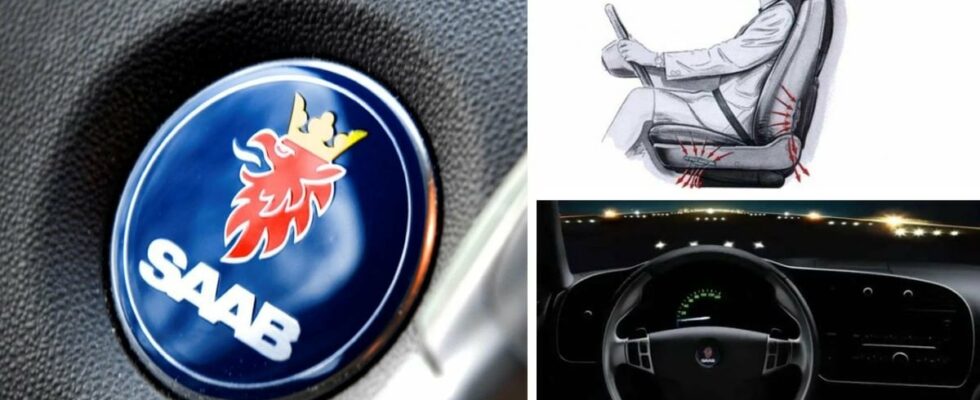Saab was a car brand that was happy to spend time and money on innovation and engineering.
Saab was early with a lot
Abroad, Saab is perhaps best known for having been early in installing turbo engines in regular family cars, which is something that most car manufacturers do today.
However, they were not the first to build a turbo car.
There are, however, a number of other finesse that Saab was the first to market with, which today are found on cars from many different brands.
DON’T MISS:
Total flop for the government’s major environmental investment
New fuel prices – caused by the war in the Middle East
Seat heating
Our Nordic climate is much, much harsher than for countries further south in Europe, and Saab was early in developing equipment focused on making the cold Swedish winters more tolerable.
Seat heating is a feature that few want to live without in winter – Photo: Saab Automobile
A feature that is now standard on virtually all new cars in Sweden, and in many other parts of the world, is heated seats.
Saab was the first car manufacturer to introduce seat heating in its cars, when it started offering the function on the 99 model in 1971.
Headlight cleaning
Another function optimized for Swedish winter weather is headlight cleaning, which was introduced on the Saab 99 in 1970.
Headlight cleaning keeps the lights clean from snow and slush – Photo: Saab Automobile
Winter’s snow, ice, salt and slush easily accumulate on the headlights and impair their ability to illuminate the road. The solution was to mount a wiper blade and a washer nozzle on each side, which keep the glass clean.
The function was perceived as making so much sense from a safety point of view that only four years later it became a legal requirement in Sweden, which means that all car manufacturers were forced to develop their own versions of the system.
Ventilated seats
However, it is not only in the area of optimization for winter road conditions that Saab has been the first to innovate.
In 1997, the new Saab 9-5 was launched, which was the first car on the market with ventilated seats. Driving on a hot summer day can easily be a sweaty affair, and this is especially true if you are sitting on leather seats.
With ventilated seats, driving in summer becomes more pleasant – Photo: Saab Automobile
The leather on the ventilated seats in the Saab 9-5 was full of small air holes, and fans in the seats carried away the hot air, creating a cooling and comfortable experience.
The function is found today in most luxury cars, and also in many more ordinary wagons.
Active neck protection
Ventilated seats were not the only world news on the Saab 9-5 when it arrived in 1997.
Like Volvo, Saab had a strong focus on safety for a long time, and the model was the first in the world to be equipped with active head restraints.
The seats in the Saab 9-5 were meant to protect against neck and head injuries – Photo: Saab Automobile
The innovation was named Saab Active Head Restraint, abbreviated as SAHR, and had the main function of protecting the occupants from injuries in the event of a collision from behind.
The headrest is made to catch the head when it is thrown forward in a crash, to avoid so-called whiplash injuries.
In 2001, statistics from Folksam showed that the risk of suffering a severe whiplash injury is reduced by 75 percent in a car with active head restraints.
Black panel / Night panel
An innovation that Saab was certainly the first with, but which has not had an impact in the rest of the car industry, is the Black panel function, later Night panel.
The feature was introduced on the second generation Saab 900 in 1993, and took its inspiration from the aircraft industry.
Night panel should make the driver less tired – Photo: Saab Automobile
If you press the Night panel button, pretty much all instruments except the speedometer are turned off. If something happens that requires the driver to see another instrument, this lights up. for example, the tank gauge lights up if it’s time to fill up with petrol.
Night panel is intended to reduce fatigue when driving in the dark, as people easily get tired from too many impressions.
Whether the function is actually particularly useful is debated. On long journeys in the Swedish winter darkness, however, it can be nice to be able to turn off as much of the interior lighting as possible.
DON’T MISS:
Changed requirements for driving licenses – from February
Tesla back on top – the best-selling cars this year
